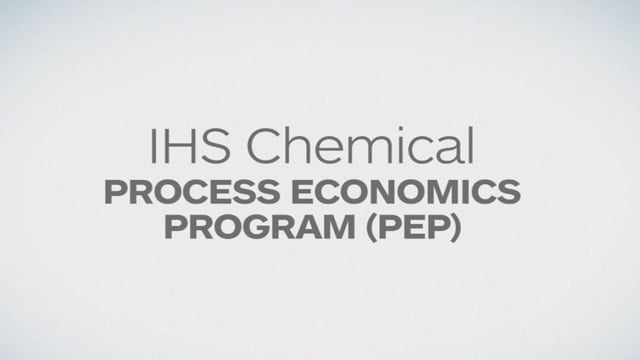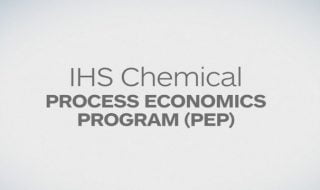دانلود گزارش Propane Dehydrogenation Process Technologies از PEP Report 267A

خرید گزارش Propane Dehydrogenation Process Technologies
برای دانلود فایل Propane Dehydrogenation Process Technologies مربوط به PEP Report 267A و دریافت پی دی اف سوخت های زیستی از جلبک ها بر روی کلید خرید در انتهای صفحه کلیک کنید. پس از اتصال به درگاه پرداخت و تکمیل مراحل خرید، لینک دانلود ایمیل می شود. این گزارش مربوط به سال 2015 و در فرمت PDF ارسال می شود.
در صورتی که نیاز به دانلود هر گزارشی از IHS و یا PEP دارید، فقط کافیست ادرس اینترنتی گزارش را از سایت ihsmarkit.com و یا https://global.ihs.com برای ما ارسال کنید (راههای ارتباطی در صفحه تماس با گیگاپیپر ). پس از بررسی، هزینه ان اعلام می شود. پس از واریز نسخه الکترونیکی ارسال می شود.

Propane Dehydrogenation Process Technologies
PEP Report 267A
Published October 2015
لینک گزارش از Propane Dehydrogenation Process Technologies
For Download Please Contact Us :
Price : 500$
https://www.spglobal.com/commodityinsights/en/ci/products/chemical-technology-pep-propane-dehydrogenation-process-technologies-267a.html
دانلود رایگان گزارش Propane Dehydrogenation Process Technologies
برای اطمینان از کیفیت گزارش Propane Dehydrogenation Process Technologies ، چند صفحه ابتدایی ان بصورت رایگان قرار داده شده است.گزارشهای دیگر دانلودی از ihsmarkit.com به همین صورت هستند.
درباره گزارش Propane Dehydrogenation Process Technologies
In a propane dehydrogenation (PDH) process, propane is selectively dehydrogenated to propylene. As one of the “on-purpose” propylene production routes, PDH has recently received much attention, and propylene production capacity via PDH is slated to grow rapidly over the next several years. Dozens of new PDH installations have been announced worldwide, and many of them are already under construction. The single feed/single product feature is one of the most attractive aspects of PDH, especially for propylene derivative producers looking to back-integrate for a secure and cost-effective source of propylene.
دانلود گزارش فن آوری های فرآیند هیدروژن زدایی پروپان
در فرآیند هیدروژن زدایی پروپان (PDH)، پروپان به طور انتخابی به پروپیلن هیدروژنه می شود. PDH به عنوان یکی از مسیرهای تولید پروپیلن “در هدف” اخیراً مورد توجه قرار گرفته است و ظرفیت تولید پروپیلن از طریق PDH قرار است در چند سال آینده به سرعت رشد کند. ده ها نصب جدید PDH در سراسر جهان اعلام شده است و بسیاری از آنها در حال ساخت هستند. ویژگی تک خوراک/تک محصول یکی از جذابترین جنبههای PDH است، بهویژه برای تولیدکنندگان مشتقات پروپیلن که به دنبال ادغام مجدد برای منبع امن و مقرونبهصرفه پروپیلن هستند.
فهرست مطالب Propane Dehydrogenation Process Technologies
Contents
1
Introduction
1-1
2
Summary
2-1
Commercial aspects
2-1
Global propylene industry
2-1
China
2-2
North America
2-3
Propane dehydrogenation
2-3
Propylene prices
2-5
Technical aspects
2-6
Chemistry
2-7
Catalysts
2-7
Reactor systems
2-8
CB&I Lummus CATOFIN PDH process
2-9
UOP Oleflex PDH process
2-10
Uhde STAR PDH process
2-11
Economic aspects
2-12
Propylene from propane by the Lummus CATOFIN process
2-12
Propylene by the UOP Oleflex process
2-13
Propylene from propane by the Uhde STAR process
2-13
Confidence ratings
2-14
Conclusions
2-14
3
Industry status
3-1
Propylene grades for chemical manufacture
3-1
Global propylene industry
3-2
China
3-3
North America
3-5
Propylene production
3-6
Steam cracking
3-6
Refinery FCC
3-7
Propane dehydrogenation
3-7
Metathesis
3-8
Propylene transportation and storage
3-9
Propylene prices
3-9
Commercial-scale PDH plants
3-10
North America
3-11
China
3-12
Thailand
3-13
Malaysia
3-13
South Korea
3-13
Middle East
3-13
Europe
3-14
Africa
3-14
CIS and Baltic States
3-14
4
Technology review
4-1
Propylene by propane dehydrogenation (PDH)
4-1
Chemistry
4-2
Commercial processes
4-3
The UOP Oleflex process
4-4
IHS CHEMICAL | Process Economics Program RP267A
October 2015
iii
© 2015 IHS
Chemistry of the Oleflex process
4-4
Development of dehydrogenation catalysis by UOP
4-7
Pt–based catalysts
4-7
Other PDH catalysts from UOP
4-9
Oleflex reactor/regenerator system
4-9
Oleflex process
4-13
Alternative UOP reactor and process schemes for PDH
4-15
Fluidized bed reactors
4-15
Integration of Oleflex with FCC
4-17
Oxidative dehydrogenation
4-17
The CB&I/LUMMUS CATOFIN process
4-18
Chemistry of the CATOFIN process
4-18
CATOFIN reactor, regeneration, and heat management system
4-19
Development of CATOFIN dehydrogenation catalysis and process
4-20
CATOFIN process configuration
4-22
The Uhde STAR process
4-24
Chemistry of the STAR process
4-24
Development of dehydrogenation catalysis by Phillips Petroleum
4-29
Reactor system for oxydehydrogenation
4-34
Feedstock for the STAR process
4-36
Configuration and operating conditions of the STAR process
4-37
Linde/BASF/Statoil/Borealis PDH process
4-38
FBD–3 process
4-39
5
Propylene from propane by the CATOFIN process
5-1
Process description
5-1
Propane dehydrogenation
5-1
Product separation
5-2
Compression and low temperature gas separation
5-2
Recovery and purification of propylene
5-3
Refrigeration
5-4
Process discussion
5-4
Catalyst and chemicals
5-5
Low temperature gas separation
5-6
Steam system configuration
5-6
Materials of construction
5-6
Integration with a polypropylene plant
5-7
Process economics
5-11
Capital cost
5-11
Production cost
5-11
Profitability
5-12
6
Propylene from propane by the Oleflex process
6-1
Process description
6-1
Propane dehydrogenation (Section 100)
6-2
Feed treatment and heavies removal
6-2
PDH reaction and continuous catalyst regeneration
6-2
Transfer of catalyst between PDH reactors
6-3
Continuous catalyst regeneration
6-3
Product recovery (Section 200)
6-5
Gas separation and hydrogen purification
6-5
SHP and fractionation
6-5
Process discussion
6-6
IHS CHEMICAL | Process Economics Program RP267A
October 2015
iv
© 2015 IHS
Feedstocks and products
6-7
Catalyst
6-7
Reactor-regenerator
6-8
SHP reactor
6-9
C3 splitter heat pump design
6-9
Materials of construction
6-9
Environmental and safety aspects
6-9
PDH reactor regeneration vent gas
6-9
PDH catalyst
6-10
Dryer regeneration off-gas
6-10
Process economics
6-18
Capital cost
6-18
Production cost
6-18
Profitability
6-19
7
Propylene from propane by the Uhde STAR process with oxydehydrogenation
7-1
Process description
7-1
Feed pretreatment and reaction section
7-1
Feed treatment and heavies removal
7-2
Reactors (STAR reformer and oxyreactor)
7-2
Recovery and purification of propylene
7-4
Compression
7-4
CO2 removal
7-4
Cold box
7-5
Fractionation
7-5
Refrigerant systems
7-6
Process discussion
7-6
Catalytic dehydrogenation
7-6
Catalyst regeneration
7-7
Recovery and purification of propylene
7-9
Process economics
7-18
Capital cost
7-18
Production cost
7-18
Profitability
7-19
Design conditions
B-1
Cost bases
B-1
Capital investment
B-1
Production costs
B-2
Effect of operating level on production costs
B-2
Feedstock and Energy Pricing
B-3
Appendix A: Patent summary table
A-1
Appendix B: Design and cost bases
B-1
Appendix C: Cited references
C-1
Appendix D: Patent references by company
D-1
Appendix E: Confidence ratings
E-1
Appendix F: Process flow diagrams
F-1
IHS CHEMICAL | Process Economics Program RP267A
October 2015
v
© 2015 IHS
Table 2.1 World prices for propylene
2-5
Table 2.2: Summary economics of propane dehydrogenation process technologies
2-14
Table 3.1 Propylene grades for chemical manufacture
3-2
Table 3.2 World prices for propylene
3-10
Table 4.1 Process parameters for commercial PDH technologies
4-4
Table 4.2 UOP platinum dehydrogenation catalysts over time
4-8
Table 4.3 Chronology of representative forerunner patents for the STAR® catalyst technology
4-30
Table 5.1 Propylene from propane by the CATOFIN processDesign bases and assumption
5-7
Table 5.2 Propylene from propane by the CATOFIN processStream flows
5-8
Table 5.3 Propylene from propane by the CATOFIN processMajor equipment
5-9
Table 5.4 Propylene from propane by the CATOFIN processUtilities summary
5-10
Table 5.5 Propylene from propane by the CATOFIN processTotal capital investment
5-13
Table 5.6 Propylene from propane by the CATOFIN processCapital investment by section
5-14
Table 5.7 Propylene from propane by the CATOFIN processProduction costs
5-15
Table 6.1 Propylene from propane by the Oleflex processDesign bases and assumptions
6-6
Table 6.2 Performances of Oleflex dehydrogenation process
6-7
Table 6.3 UOP Oleflex catalyst development
6-8
Table 6.4 Propylene from propane by the Oleflex processStream flows
6-10
Table 6.5 Propylene from propane by the Oleflex processMajor equipment
6-11
Table 6.6 Propylene from propane by the Oleflex processUtilities summary
6-13
Table 6.7 Propylene from propane by the Oleflex processTotal capital investment
6-13
Table 6.8 Propylene from propane by the Oleflex processCapital investment by section
6-15
Table 6.9 Propylene from propane by the Oleflex processProduction costs
6-16
Table 7.1 Propylene from propane by the Uhde STAR processDesign bases and assumptions
7-10
Table 7.2 Propylene from propane by the Uhde STAR processStream flows
7-11
Table 7.3 Propylene from propane by the Uhde STAR processMajor equipment
7-12
Table 7.4 Propylene from propane by the Uhde STAR processUtilities summary
7-13
Table 7.5 Propylene from propane by the Uhde STAR processTotal capital investment
7-14
Table 7.6 Propylene from propane by the Uhde STAR processCapital investment by section
7-15
Table 7.7 Propylene from propane by the Uhde STAR processProduction costs
7-16
Table A.1 Patent summaries
A-1
Figure 3.1
China’s propylene self-sufficiency
3-4
Figure 4.1
Yields of various propylene production processes
4-2
Figure 4.2
Equilibrium conversion of light alkanes at 100 kPa pressure
4-3
Figure 4.3
Reactions catalyzed by platinum and acid sites during light paraffin
dehydrogenation with unmodified catalyst
4-6
Figure 4.4
Temperatures required to achieve 10% and 40% conversion of
C2–C15 paraffins at 1 atm
4-7
Figure 4.5
Conventional reactor configuration for propylene production in the Oleflex unit
4-10
Figure 4.6
Moving bed reactor with countercurrent and radial flow
4-11
Figure 4.7
Block flow diagram of conventional Oleflex process
4-14
Figure 4.8
Configuration diagram of the CATOFIN process for propylene production
4-23
Figure 4.9
Chemistry of the STAR process for propylene production
4-25
Tables
Figures
IHS CHEMICAL | Process Economics Program RP267A
October 2015
vi
© 2015 IHS
Figure 4.10
Effects of oxygen on conversion in the STAR process
4-26
Figure 4.11
Proposed mechanism of oxidative dehydrogenation on platinum
4-27
Figure 4.12
Catalyst preparation steps for Pt–Sn–Zn/Ca spinel PDH catalysts
4-32
Figure 4.13
Gas premixing assembly in DE 102004024957
4-35
Figure 4.14
STAR process oxyreactor assembly
4-36
Figure 4.15
Configuration diagram of the STAR process for propylene production
4-37
Figure 5.2
Reactor system
5-5
Figure 6.2
Catalyst regeneration
6-4
Figure 7.2
Both reaction trains in operation
7-8
Figure 7.3
One reaction train in regeneration
7-8
Figure 7.4
Carbon dioxide removal
7-9
Figure 5.1
Propylene from propane by the Lummus CATOFIN process
7-1
Figure 6.1
Propylene from propane by the UOP Oleflex process
7-2
Figure 7.1
Propylene from propane by the Uhde STAR process